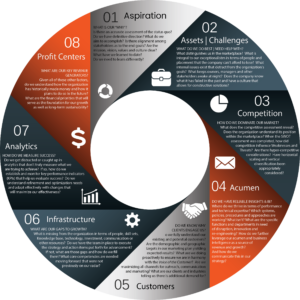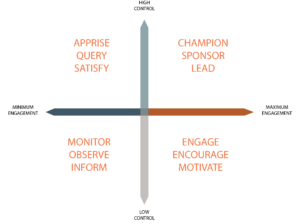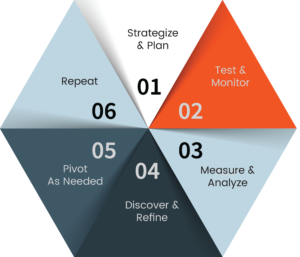If you have read my published content or heard my lectures, you already know that I view every business opportunity and challenge through the lens of Escalate Solutions’ Four Pillars of Strategy (Planning, Alignment of Stakeholders, Execution and Optimization). This holds true with critical decisions involving Incentive Compensation and related performance motivators.
Incentivizing performance in the workplace through rewards such as additional compensation, commissions, paid-time-off (PTO), stock options or other perks can be an effective and successful tool for managers and employees, ifthe program is developed properly. It is important that leaders recognize that incentive compensation plans are often riddled with pitfalls that can quickly backfire and turn the most well-intended proposal into a human resources nightmare. The following guidelines can help your organization keep performance rewards as a motivator…not a mousetrap.
 As always, the first step in the strategy is Planning. If an organization intends to utilize rewards to encourage its staff, it only follows that the themes of the strategic plan, key objectives and initiatives and core elements of the strategy also serve as the foundation for the incentives being considered. Throughout the strategic planning phase, the company’s aspirations, assets, challenges, competition, business acumen, customers, infrastructure, analytics capabilities and profit centers were all outlined. The same fundamentals should be utilized to help drive and measure performance. Employees of the organization are ultimately the individuals that will achieve the strategy, so it only makes sense that their motivators are directly related to big picture.
As always, the first step in the strategy is Planning. If an organization intends to utilize rewards to encourage its staff, it only follows that the themes of the strategic plan, key objectives and initiatives and core elements of the strategy also serve as the foundation for the incentives being considered. Throughout the strategic planning phase, the company’s aspirations, assets, challenges, competition, business acumen, customers, infrastructure, analytics capabilities and profit centers were all outlined. The same fundamentals should be utilized to help drive and measure performance. Employees of the organization are ultimately the individuals that will achieve the strategy, so it only makes sense that their motivators are directly related to big picture.

The second strategic consideration is Alignment of Stakeholders, which requires that all stakeholders have insight as the organization’s strategy, goals, objectives at a level appropriate to their engagement and control. Buy-in at every level of the company not only reinforces the corporate culture, but it is necessary component if aggressive strategic initiatives are to be achieved. When it comes to compensation and other rewards that will be provided to the individuals relied up to achieve the aims, alignment and buy-in is equally vital. Employees need to have a clear understanding of the motivators, why they matter, how they will be measured, and perhaps more importantly of all, how they can control the outcome. Employers should consider the Strategic Map for Alignment and utilize them as the basic for the goals and corresponding metrics. After all, nothing will poison a well-intended incentive program faster than an employee’s perception that they are being compensated (or not compensated) based on factors and considerations out of their control. As with alignment on an all-encompassing level, incentives and metrics for performance motivators must be appropriate to the individual’s responsibilities, authority and influence.
 Third, Execution of every corporate initiative needs to consider culture, systems, organization, outcomes, people, initiatives, analytics and sustainability. The greatest of ideas and innovations are meaningless of they are not implemented effectively, and unfortunately, this is the step where most organizations jump the shark. The good news is that the same drivers and step-by-step checklists (summarized here by Escalate Solutions as the 8 Steps of Execution) can readily be applied to keep performance programs on track. Use corporate culture as the framework, develop policies and procedures, organize and structure, clarify outcomes, communicate with the people and team, develop the initiatives, clarify KPIs and metrics, and then learn from the outcomes to reward employees and support long-term organizational viability.
Third, Execution of every corporate initiative needs to consider culture, systems, organization, outcomes, people, initiatives, analytics and sustainability. The greatest of ideas and innovations are meaningless of they are not implemented effectively, and unfortunately, this is the step where most organizations jump the shark. The good news is that the same drivers and step-by-step checklists (summarized here by Escalate Solutions as the 8 Steps of Execution) can readily be applied to keep performance programs on track. Use corporate culture as the framework, develop policies and procedures, organize and structure, clarify outcomes, communicate with the people and team, develop the initiatives, clarify KPIs and metrics, and then learn from the outcomes to reward employees and support long-term organizational viability.
 Finally the fourth step is Optimization. Every corporate objective is subject to review, modification and refinement…and the same holds true for incentive and reward programs. Enter into the process expecting that changes may need to be implemented in order to maintain employee buy-in and the long-term success of performance compensation. If an individual feels that their metrics were inappropriate, shift gears to (re)develop metrics that are better targeted. If employees are being held accountable for elements out of their control, shift those expectations to the responsible parties or make it so that the individual has the control they need.
Finally the fourth step is Optimization. Every corporate objective is subject to review, modification and refinement…and the same holds true for incentive and reward programs. Enter into the process expecting that changes may need to be implemented in order to maintain employee buy-in and the long-term success of performance compensation. If an individual feels that their metrics were inappropriate, shift gears to (re)develop metrics that are better targeted. If employees are being held accountable for elements out of their control, shift those expectations to the responsible parties or make it so that the individual has the control they need.
Strategy is a dynamic, multi-faceted process…ongoing…ever-evolving…always requiring improvement and refinement. Programs to incentivize employees in support of the broader strategy are no different in that they require investment into frameworks, process, implementation and review. Utilizing the Four Pillars as outlined above to develop, execute and improve the process will help your organization avoid the “motivation mousetrap”.

